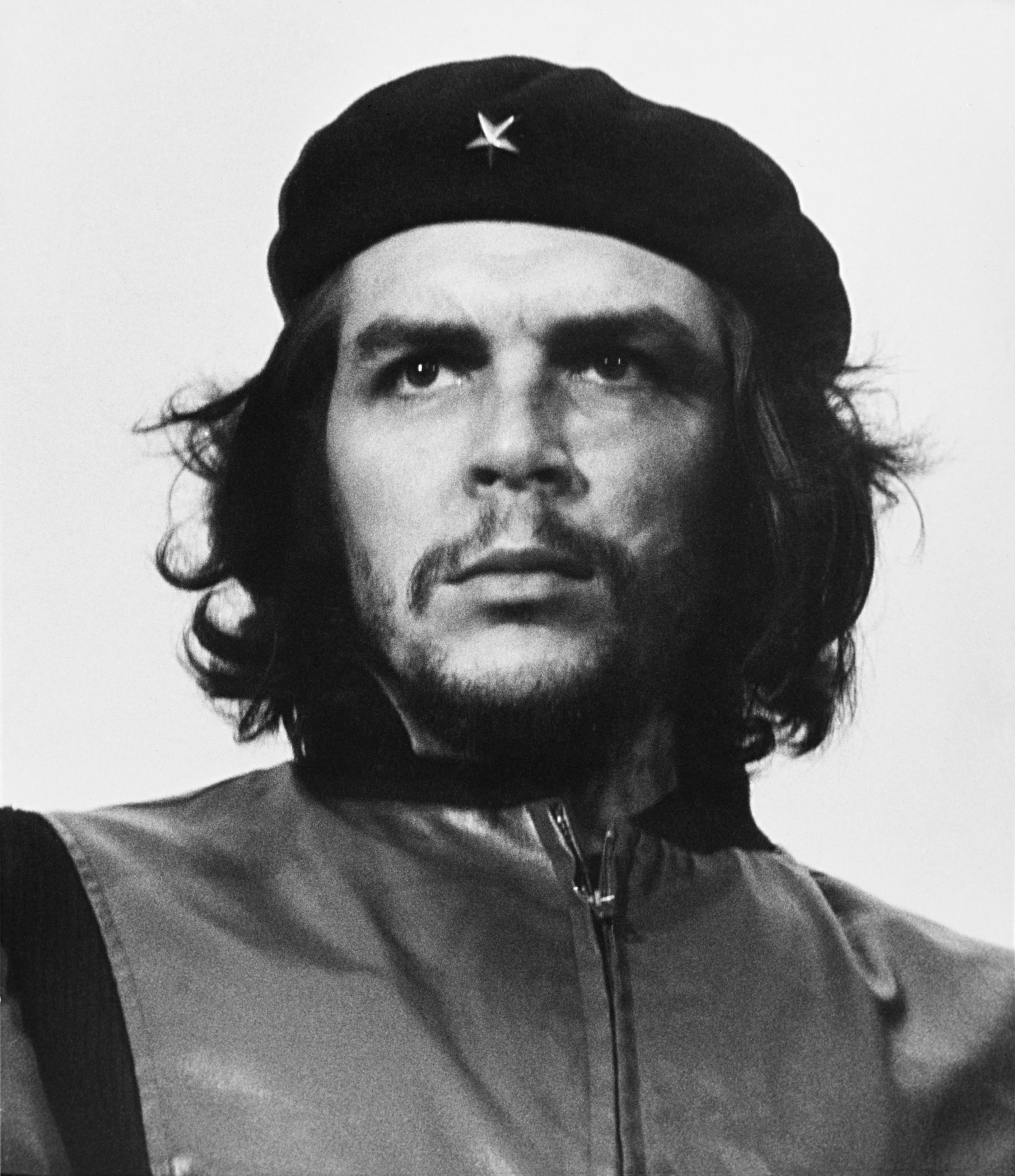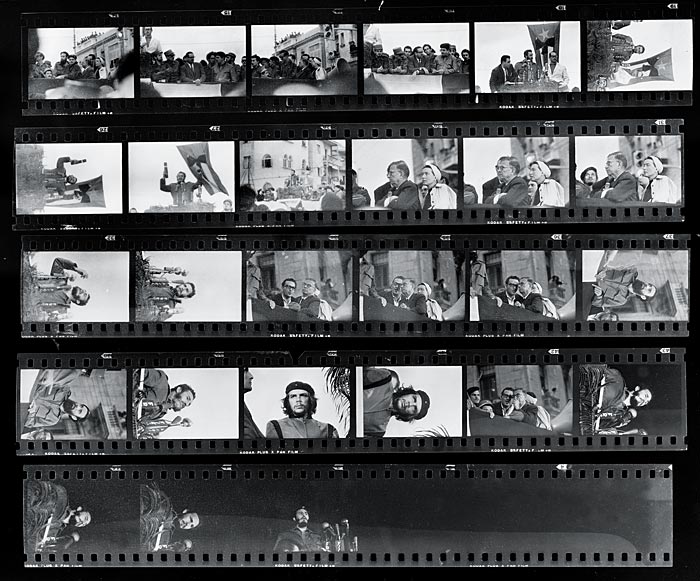 Alberto DĂaz GutiĂ©rrez (September 14, 1928 – May 25, 2001), better known as Alberto Korda or simply Korda, was a Cuban photographer, remembered for his famous image '' Guerrillero Heroico'' of Argentine
Alberto DĂaz GutiĂ©rrez (September 14, 1928 – May 25, 2001), better known as Alberto Korda or simply Korda, was a Cuban photographer, remembered for his famous image '' Guerrillero Heroico'' of Argentine Early life
Korda, whose real name was Alberto DĂaz GutiĂ©rrez, was born on September 14, 1928, inby Stuart Jeffries, ''
Cuban Revolution
The relationship between Korda was a photographer for the Cuban newspaper ''RevoluciĂłn'' when he produced on March 5, 1960, the iconic image of Che Guevara that became a worldwide symbol of revolution and rebellion. He never received any royalties for the image, because Castro did not recognize the Berne Convention for the Protection of Literary and Artistic Works. In 2000, he sued Smirnoff (Lowe Lintas) over the use of the image in advertisement. Commenting on the illicit use of his photograph, the artist said, "As a supporter of the ideals for which
Korda was a photographer for the Cuban newspaper ''RevoluciĂłn'' when he produced on March 5, 1960, the iconic image of Che Guevara that became a worldwide symbol of revolution and rebellion. He never received any royalties for the image, because Castro did not recognize the Berne Convention for the Protection of Literary and Artistic Works. In 2000, he sued Smirnoff (Lowe Lintas) over the use of the image in advertisement. Commenting on the illicit use of his photograph, the artist said, "As a supporter of the ideals for which Later life and death
From 1968 to 1978 he concentrated on underwater photography until a Japanese exhibition in 1978 stimulated international interest in his work. He appeared briefly in the pre-title sequence ofKorda's Family lawsuit against Bruce Labruce's ''The Raspberry Reich''
In 2005 Bruce Labruce's producer JĂĽrgen BrĂĽning and Labruce himself were sued by the estate of Korda for a million dollars over the use of Korda's famous photo of Che "Guerrillero Heroico" in Labruce's movie '' The Raspberry Reich''. In an interview from 2018 the Canadian filmmaker talked about the lawsuit:Excerpt from ''Make Porn, Not War: An Interview With Bruce LaBruce''.It played at over a hundred film festivals and was on its way to becoming a cult hit when, about six months into my tour with the film, Jurgen and I got hit with a million dollar (Canadian) lawsuit for copyright infringement by the Korda estate.
The lawsuit was launched in France, which has some of the toughest copyright laws in the world, but the sixty-page court document was delivered to my door in Toronto by a local sheriff, so it was pretty heavy. We got a famous gay French lawyer, Emmanuel Pierrat, to defend us, but we technically lost. The damages were reduced to about €8,000, but we had to cover the court costs, so we ended up having to pay about €30,000 (the budget of the film was about 60,000!), effectively erasing all our profits from the film.
'The film is a critique of radical chic and both a critique and celebration of the radical left, but it is obviously anti-capitalist, so the irony of being scuttled by Che and Korda over copyright was bitter.
They argued mostly that we "demeaned" and "defiled" the image of Che, although I didn't really intend having a hot porn star jerk off on a blow-up of the Che image to be demeaning at all – more of an homage, really. I just figured everyone else in the world was jerking off to the image, so I might as well show it literally.
The film's slogans, particularly "The Revolution is My Boyfriend," started to be widely quoted online and on t-shirts and banners, neatly mirroring the radical chic critiqued in the movie.
Notable photos by Korda
* ''La Niña de la Muñeca de Palo'' (1958) * ''Entrada de Fidel a La Habana'' (1959) * ''El Quijote de la farola'' (1959) * ''Fidel in Washington'' (1959) * '' Guerrillero Heroico'' (1960) * ''Miliciana'' (1962)by Alberto Korda
Exhibitions
 Solo exhibitions of his works have been held in Helsinki, Finland, 1962; the Galleria H. Diafragma Canon, Milan, Italy, 1985; GalerĂa Servando Cabrera, Havana, 1986; Roy Boyd Gallery, Chicago, 2000; COEX, Seoul, Korea, 2011.
Group exhibitions of his works include: in 1962, Museo Nacional de Bellas Artes, Havana; 1967, ''Expo'67'', PabellĂłn Cubano, Montreal; 1980, Consejo Mexicano de FotografĂa, Mexico City; 1980, Centro de Arte Internacional, Havana; 1983, Westbeth Gallery, New York; 1999, Centro de Desarrollo de las Artes Visuales, Havana; 2000, C. Grimaldis Gallery, Baltimore, Maryland; 2000, Royal National Theatre, London; 2002, Museum of Art, Ft. Lauderdale, Florida.
Solo exhibitions of his works have been held in Helsinki, Finland, 1962; the Galleria H. Diafragma Canon, Milan, Italy, 1985; GalerĂa Servando Cabrera, Havana, 1986; Roy Boyd Gallery, Chicago, 2000; COEX, Seoul, Korea, 2011.
Group exhibitions of his works include: in 1962, Museo Nacional de Bellas Artes, Havana; 1967, ''Expo'67'', PabellĂłn Cubano, Montreal; 1980, Consejo Mexicano de FotografĂa, Mexico City; 1980, Centro de Arte Internacional, Havana; 1983, Westbeth Gallery, New York; 1999, Centro de Desarrollo de las Artes Visuales, Havana; 2000, C. Grimaldis Gallery, Baltimore, Maryland; 2000, Royal National Theatre, London; 2002, Museum of Art, Ft. Lauderdale, Florida.
Awards
He was awarded the Cuban "Palma de Plata" in 1959; named Best Photoreporter of the year, ''Revolución Journal'', Havana, 1960–1963; awarded the 5th International Award of Submarine Photografie "Maurizio Sana," Italy; awarded National Culture Distinction, Ministry of Culture, Cuba; 1994.Collections
His works are in the collections of Casa de las Américas, Havana, Cuba; Center for Cuban Studies, New York, NY; Centro Studi e Archivio della Comunicazione, Parma University, Parma, Italy; Fototeca de Cuba, Havana, Cuba; Galleria IF, Milan, Italy; Galleria Il Diafragma Kodak, Milan, Italy; Maison de la Culture de la Seine Saint-Denis, Paris, France; Museo Nacional de Bellas Artes, Havana, Cuba.References
External links
Alberto Korda, by Bill Lasarow
*BBC
News report on Korda's death
*BBC
''"Guevara's Image Saved from Drink"'', September 15, 2000
*Frontline: *Guerrillero Heroico â€
A discussion on Korda's best-known photograph
* Sun Sentinel: [https://web.archive.org/web/20090211210835/http://www.sun-sentinel.com/news/local/cuba/sfl.ro.kordaexhibit.pg,0,2032074.photogallery?index=sfl-cubakordaexhibition20080918154238 Exhibit: "Korda, Known. Unknown" now in Havana] November 10, 2008 *Washington Post
Cuba by Korda
– Photo Collection
History of a portrait
Articles on Alberto Korda picture of Che, taken March 5, 1960
Korda Photos of Fidel Castro and Che Guevara
– slideshow by ''
Photos of early days of Cuban Revolution by Alerto Korda
{{DEFAULTSORT:Korda, Alberto 1928 births 2001 deaths Che Guevara Cuban photographers Cuban communists Underwater photographers Portrait photographers Artists from Havana